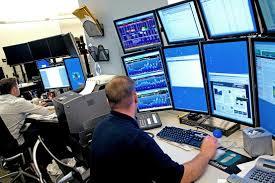Technology advancement has transformed and enhanced trading. Gone are the days when people had to assemble on trading floors, shout orders, and hope they get executed. Computers and algorithms have taken over, making it possible for people to place millions of trades in seconds.
High-Frequency Trading (HFT) is the phenomenon that has transformed trading in ways that very few people could ever imagine. The phenomenon has enhanced human trading to a great extent.
What is high-frequency trading?
Simply put, it is a mode of trading whereby powerful computers leverage highly sophisticated algorithms in market analysis and placing of orders. The computer algorithms are programmed to analyze several financial instruments and execute orders based on various market conditions.
The program’s ability to execute millions of orders at a go makes them ideal for investors looking to take advantage of the various opportunities that crop up at any given time. Additionally, their fast execution speeds increase the prospects of traders profiting from short-term price swings.
Algorithms do what humans can do, but much quicker. In addition, they remove the emotional aspect in trading by ensuring everything is rule-based. Financial instruments are analyzed, and trades executed based on pre-set rules.
High-Frequency trading stands out partly because the powerful computers and algorithms in use can spot emerging trends in a matter of seconds. The solution’s ability to recognize shifts in the marketplace also allows them to adjust accordingly before other investors come to terms with the changes.
Characteristics of HFT
- Rely on high-speed and sophisticated programs to generate investment opportunities and execute orders.
- Depend on co-location services and exchange data feeds to reduce network latency.
- Analysis and execution based on price action on short time frames
- While numerous orders are submitted for execution, some get canceled along the way
- Positions opened are closed before the end of the day
Why high-frequency trading

High-Frequency Trading stands out given its increased focus on profit and speed. Unlike other strategies, trades are only placed to generate optimum profits within the shortest time possible.
Therefore, powerful computers and algorithms analyze the market, focusing on short time frames to pursue opportunities. Positions are opened and closed extremely fast, be it at a loss of profit.
The use of computer programs and algorithms allows institutional investors to detect opportunities that humans cannot see. Additionally, the programs in use also identify the right price to open positions as well as exit points for optimum profits and minimum losses.
The use of huge amounts of capital allows hedge funds and institutions to place large size orders followed by multiple orders, therefore able to generate optimum profits with the smallest of price changes.
Who is big in HFT?
HFT is the domain of large investment banks, hedge funds, and institutional investors capable of allocating huge funds to gain an edge through automated trading. Unlike retail investors, they can invest significant capital in powerful computers and highly curated computer programs that can analyze the market to the smallest metrics.
In addition, high net worth investors are the only ones that can make good use of powerful computers to transact a large number of orders. Unlike retail investors, they have the capital to place orders without any restriction.
The ability to scan multiple markets in a matter of seconds also ensures an edge against other traders carrying out analysis manually.
HFT benefits

HFT stands out as an ideal trading regime, given its success rate. Computers and algorithms can keep track of several securities, markets, and exchanges at any given time.
Consequently, they can make thousands of trades per second, allowing investors to generate profits even with the smallest of price movements.
Additionally, HFT tends to increase liquidity given the millions of orders placed at a go. Therefore, the practice makes it easy for other dealers to enter and exit positions with ease at the desired price point. Increased liquidity reduces investors’ risk exposure as they can open and close positions with ease.
Contrary to perception, HFT firms don’t compete with individual dealers. Instead, they enable a symbiotic relationship that benefits both parties. HFT firms offer securities at lower prices and subsidize trades. Additionally, their actions help in the reduction of trading costs by ensuring spread is always low.
HFT drawbacks
Some critics argue that HFT only benefits large investment firms, given their ability to sway the market’s direction to their own advantage. Therefore, the strategy reduces the prospects of retail traders competing equally in the space.
The risk of losses is usually high with HFT. Chasing short-term market movements and placing multiple orders only increases the risk of losing money on the market going against.
HFT has also been the cause of wild price swings, given the placing and canceling of millions of orders at a go. Likewise, the prospects of a market crash with HFT are usually high.
Bottom line
High-Frequency Trading is the sensation of taking the art of trading to new heights. It is an improvement to human trading as it relies on computers and algorithms to carry out market analysis and execute positions.
HFT is attributed to enhancing market liquidity and increasing the prospects of generating multiple short-term profits over prolonged periods. However, it also increases the risk exposure on the placing of numerous orders.
Read also: How Algorithmic Trading Is Enhancing Your Trading